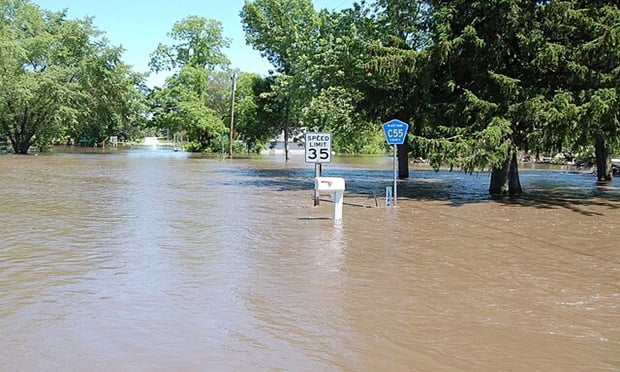Finally, a new number to bounce around the P&C insurance industry lexicon: $80 billion. Gulp. That's quite a number, isn't it?
For years, we have been estimating that fraud siphons about $30 billion from P&C insurers' pockets, and arguably much more from the public at large. I must confess to having grown tired, and rather skeptical, of this figure, even in spite of the disclaimers about its opacity.
But having a shiny new projection is the opposite of refreshing; it's alarming. That's because, according to Aite Group, we'll be contending with about $80 billion in fraud “taxes” by 2015. As for 2012, Aite estimates this rampant crime cost P&C insurers about $64 billion.
As claims departments and their SIU brethren attempt to keep up with th e growth in fraud, which is penetrating every line of business, it's clear that a more realistic snapshot of the magnitude of the problem is at best, a sort of preface to a Tolstoy-esque novel.
e growth in fraud, which is penetrating every line of business, it's clear that a more realistic snapshot of the magnitude of the problem is at best, a sort of preface to a Tolstoy-esque novel.
However, to deploy more effective anti-fraud technologies, U.S. carriers are going to have to spend…a lot. In fact, spending allocated to fraud solutions (split roughly evenly between analytics and scoring products and services) is expected to grow by 44 percent between 2011 and 2016, according to “The Escalating War on Insurance Fraud: P&C Carriers and Fraudsters Up Their Games,” Aite Group's overview of the North American P&C insurance fraud battlefield, including its history and evolution.
Stephen Applebaum, the author of the Aite report, based his findings on interviews with 22 p&c insurance industry stakeholders and fraud-prevention organizations conducted from July 2012 to March 2013.
“The growth in both cost and type of fraud show no sign of easing, even as claims frequency and premiums written have remained relatively flat,” explains Applebaum. “What puzzles and strikes me more than anything is that [fraud] keeps growing in spite of the significant efforts expended in traditional detection and deterrence processes.
“More potentially effective solutions are available, both technological and in the areas of industry and public agency information exchange and cooperation,” he continues. “[These solutions] are proven to work, but need to be more aggressively adopted.”
 Bigger Cheese, More Mice
Bigger Cheese, More Mice
Applebaum cautions that insurers that fail to “up their game” could will not only become competitively disadvantaged but also adversely selected by enterprising fraudsters. Therefore, carriers should revisit and update their enterprise fraud strategies and actively review new and more effective solutions in the marketplace. “Simple rules-based scoring and workflow solutions, while still effective, are now just table stakes,” says Applebaum.
“Insurers must focus on solutions that enable detection as early as possible in the process—preferably in underwriting or at least during the claims reporting process—before payments are made and valuable investigative opportunities are lost. This capability will not only yield the highest financial results but will also encourage fraudsters to seek softer targets.”
Sizing Up The Rats
Last year, claims fraud costs averaged about 14 percent of the total net premium written in the U.S. P&C industry. When breaking down the cost by product line, Aite finds private passenger auto suffered by far the greatest hit, accounting for $26 billion of the total $64 billion in 2012. After that, homeowners' multi-peril ($14 billion) and workers' comp ($8 billion) were the only other two lines to suffer costs more than $4 billion.
Numbers released earlier this year by the National Insurance Crime Bureau (NICB) reaffirm the magnitude and scope of this pervasive crime. Questionable claims (QCs) are piling up, as NICB notes a 27-percent increase in QCs over the last three years. In 2010, the agency logged 91,652 QCs from member insurers, with 100,201 in 2011 and 116,171 in 2012.
 There is compelling evidence that U.S. p&c insurers are not exactly resting on their laurels. The sector spent $271 million last year on fraud analytics and scoring products and is expected to spend $291 million this year. Aite anticipates spending to annually rise $20 million per year, on average. This means that by 2016, insurer spending could top $360 million, split evenly between scoring and analytics investments.
There is compelling evidence that U.S. p&c insurers are not exactly resting on their laurels. The sector spent $271 million last year on fraud analytics and scoring products and is expected to spend $291 million this year. Aite anticipates spending to annually rise $20 million per year, on average. This means that by 2016, insurer spending could top $360 million, split evenly between scoring and analytics investments.
Applebaum emphasizes the importance of text mining, case management, visual link/social networks analytics, and more-evolved instances of identity management and verification in early detection and fraud deterrence. Increasingly, cyber defenses and outlier detection, along with fresh investigative techniques, such as behavioral analytics and speech biometrics, will be key to strengthen insurers' holistic, proactive solutions as well.
Want to continue reading?
Become a Free PropertyCasualty360 Digital Reader
Your access to unlimited PropertyCasualty360 content isn’t changing.
Once you are an ALM digital member, you’ll receive:
- Breaking insurance news and analysis, on-site and via our newsletters and custom alerts
- Weekly Insurance Speak podcast featuring exclusive interviews with industry leaders
- Educational webcasts, white papers, and ebooks from industry thought leaders
- Critical converage of the employee benefits and financial advisory markets on our other ALM sites, BenefitsPRO and ThinkAdvisor
Already have an account? Sign In Now
© 2025 ALM Global, LLC, All Rights Reserved. Request academic re-use from www.copyright.com. All other uses, submit a request to [email protected]. For more information visit Asset & Logo Licensing.








